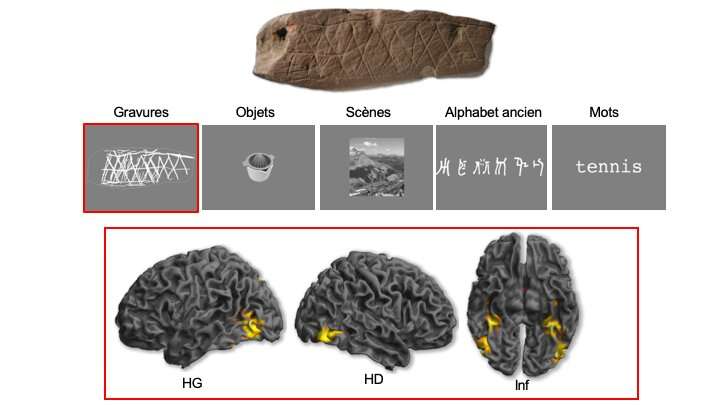Neurosciences unlock the secret of the first abstract engravings

Long before Lascaux paintings, humans engraved abstract motifs on stones, shells or egg shells. the earliest are 540,000 years old. For the archaeologists who discovered these objects, the question is whether they are the result of unpurposeful behaviour—the simple desire of imitating nature—or endowed with meaning.
An unprecedented collaboration between archaeologists and researchers in cognitive neuroimaging from the CNRS, university of Bordeaux and CEA is providing answers to this question for the first time.
These prehistoric abstract patterns are processed by the same brain areas that recognize objects. They also activate a region of the left hemisphere that is well known in the processing of written language.
The results of this interdisciplinary collaboration reinforce the hypothesis that our ancestors attributed meaning to their tracings, perhaps even symbolic.
They are published in Royal Society Open Science on 3 July 2019.
More information: E. Mellet et al. Neuroimaging supports the representational nature of the earliest human engravings, Royal Society Open Science (2019). DOI: 10.1098/rsos.190086

















